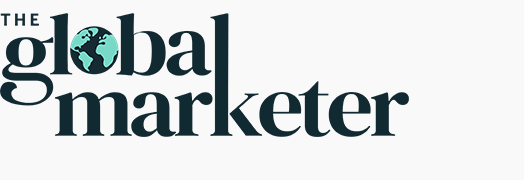With a young, mobile-first population and over 77 million people online, Turkey has become a powerful force in digital marketing. Social media use is at record highs, making it a major opportunity for global brands. But that’s only if you know how to connect with the local audience.
Turkey’s digital landscape isn’t like most North American and European countries. While its population is highly engaged, particularly on fast-paced and interactive content, users expect everything to be culturally tailored to them. With its strong national pride and shared values, you’ll need to have a good understanding of Turkish culture to create content that resonates.
In this guide, you’ll discover what makes digital marketing in Turkey unique and how to tailor your strategy to build trust and drive engagement in one of the region’s most dynamic online markets. You’ll also find key insights from one of our Community Managers from Turkey, Zeren Oruc, who has worked with us on several marketing projects aimed at Turkish audiences over the years.
An introduction to digital marketing in Turkey

Thanks to Turkey’s (officially the Republic of Türkiye) high mobile penetration and tech-savvy young population, digital marketing in the nation has grown rapidly in the past decade. Internet and social media usage have greatly increased across all demographics.
As of 2025, over 77.3 million people in Turkey are using the internet, accounting for approximately 88% of the population. To compare, in January 2015, only 42.5 million Turkish people were online, representing an 81% increase over the last decade. And 75.6% of that user base used at least one social media platform in January 2025, no matter their age.
Instagram is by far the most-used social media platform, with 92.2% of internet users aged 16 or older using the platform every month. The next most popular platforms (with their respective monthly user percentage) are Facebook (71.1%), X (60.5%), TikTok (49.6%), Pinterest (39.1%), Snapchat (31.4%) and LinkedIn (30%).
While users in many other countries are now spending most of their time on TikTok, Instagram remains the dominant platform in Turkey. Users spend an average of 32 hours and 36 minutes on the platform per month, compared to 26 hours and 26 minutes on TikTok. Users spend 23.5 hours on YouTube, 9.75 hours on Facebook and 5 hours on X per month.
Breaking this down:
- TikTok usage has grown rapidly among young Turkish users, with a 34.4% increase since January 2023.
- LinkedIn is the fastest-growing platform overall, with a 46% increase in users during the same period, despite lower total user numbers.
- Most social media audiences in Turkey skew male, except for Snapchat and YouTube, which have a more balanced gender ratio.
Like many nations relatively new to internet adoption, Turkey is a mobile-first nation. 97.6% of internet users aged 16+ have smartphones, compared to only 62.8% having a laptop or desktop computer. Mobile connectivity speeds have increased by 24% since June 2024, after a few years of plateauing, and mobile’s share of web traffic has consistently hovered at around 74-75% since 2019.

Localization and cultural adaptation for Turkish audiences
When localizing content for Turkish audiences online, there are several key factors to consider that can influence whether Turkish people respond positively or negatively to your content.
Tailored to Turkish culture
Understanding Turkish culture and implementing those insights into your content creation enables you to craft content that better engages Turkish users.
The Turkish market values family and community, and is accustomed to and expects content tailored to their market. It’s a collectivist society, so marketing content that emphasizes “we” over “I,” showcases multigenerational families, or shows shared meals or group experiences, performs better than content that promotes individualism.
Hospitality is also a core tenet of Turkish culture. Keep your messaging friendly and supportive, like “we’re here for you” instead of a hard sell of your product. Turkish customers are very brand loyal once they become customers, but you build trust with them at first by using warm, welcoming and respectful communication.
Finally, Turkish audiences are proud of their country and respond positively to brands showcasing the country’s national pride and identity.
Some good cultural references that may resonate with your audience include:
- Turkish TV dramas, as these are popular across all demographics
- Daily rituals like tea, or shopping at the local market, called a pazar
- Sarcastic, observational and self-deprecating humor
- Signature regional dishes, such as Ezine cheese or Antep baklava, which hold strong geographic significance and local pride. Anything related to food has huge potential in Turkey. These are usually part of everyday life or special occasions and resonate deeply.
- Textiles and crafts, particularly regionally specific fabrics or embroidery, are another rich area for visual content. Even if people aren’t from that specific region, these visuals signal a genuine interest in Turkish culture.
- Nature and iconic landscapes, places like Cappadocia, Kaçkar Mountains or Lake Van, can evoke strong emotional connections and aspiration.
- Animal rights and care for street animals are also important topics in Turkish culture. It’s most people’s soft spot, making it a relevant theme for empathetic and cause-driven campaigns.
- Sports, particularly football and women’s volleyball, which is a growing national passion.
“Women’s volleyball is not just about sports, but also social values. The national team is increasingly seen as a symbol of both success and women’s rights. Collaborations or campaigns around this could make a strong impact, especially for brands supporting gender equality.”
– Zeren Oruc, Turkish Community Manager at VeraContent
Important holidays
Both religious and government holidays are important in Turkey, and you should be aware of them when creating Turkey-based content. While the country is officially secular, a large part of the population identifies as Muslim.
See also: International holiday marketing: Dates, culture & language
Religious holidays (dates vary for all, based on the Islamic calendar):
- Ramadan: Lasts for one month
- Eid al-Fitr: Known as Ramazan Bayrami or Şeker Bayrami in Turkey, and lasts for three days
- Kurban Bayramı Arifesi: Known as Eid al Adha in many other countries
- Kurban Bayramı: Lasts for four days
National holidays:
- January 1st: New Year’s Day
- April 23rd: National Sovereignty and Children’s Day
- May 1st: Labor Day
- May 19th: Commemoration of Atatürk, Youth and Sports Day
- August 30th: Victory Day
- October 28th: Republic Day’s Eve
- October 29th: Republic day
See below an example from Turkcell celebrating Democracy and National Unity Day in Turkey on July 15th.
Dynamic and engaging
While Turkish people expect warm and culturally more conservative communication, they also prefer exciting and participatory content.
- Video is king in Turkey, and most Turkish people use Instagram Reels, YouTube and/or TikTok. Short-form videos, in particular, perform very well, as Turkish people like fast-paced, entertaining and emotionally engaging content. Turkish Gen Z users love the latest trends, so if that’s your audience, incorporate (locally) trending audio or memes.
- Infographics satisfy the Turkish audience’s desire for clear and visually structured information. Use them to explain more complex ideas quickly. Make sure to translate everything, including sometimes-overlooked things like currency and use local examples to help users better understand.
- UGC encourages community among social and relationship-driven Turkish users. They’re more likely to trust content from “people like them” than a faceless brand, and are also willing to create and submit their own videos and photos, encouraging interaction.
- Interactive formats, like polls, quizzes and story Q&As on Instagram, or duets on TikTok, perform well in Turkey. Turkish users want to feel like part of the conversation, and are highly participative.
See also: Local video marketing: How to get more views in your area
Language and tone
While more Turkish people understand some English, using Turkish in your content is essential for users to trust you and emotionally relate to your content. Plus, using Turkish increases your SEO ranking and social visibility in the country. Ensure that any fonts you choose support all Turkish diacritics.
As previously mentioned, the Turkish audience prefers relationship-oriented text, not too overly transactional. Even in ads, they want slightly polite, formal and indirect communication. If you’re exclusively targeting a very young audience, you might have more freedom to play with your copy, but otherwise, play it safe.
For example, instead of writing “Buy now – it’s the best deal!”, try something like: “Bu fırsatı kaçırmayın – size özel bir önerimiz var.” (“Don’t miss this opportunity – we have a special offer just for you.”) It’s warm and inclusive, and not demanding to audiences.
Visuals
Since Turkish people are used to seeing content localized to their culture, you also need to localize imagery. Instead of generic stock photos featuring a street full of people that could be in Canada or Copenhagen, use urban scenes from Turkish cities, traditional homes and bazaars, as well as people socializing over tea, Turkish breakfast or backgammon.
However, be mindful that some references like the pazar (local market), while authentic, may not always carry emotional or nostalgic value for local audiences.
“Pazar is a market for us and an integral part of life. It’s not something we would highlight in marketing — it’s more commonly used to appeal to tourists.”
– Zeren Oruc, Turkish Community Manager at VeraContent
Turkish ads often feature specific colors:
- Red: the color of national pride, symbolizes warmth and strength
- Blue: symbolizes trust and safety
- Gold and earth tones: associated with tradition and luxury
Turkish audiences are also accustomed to right-hand CTAs, large clickable buttons and menu navigation clearly visible at the top or bottom of a webpage. Prominent WhatsApp integration can also help build trust with customers.
Finally, ensure your content is adapted to mobile-first Turkey. Make sure your visuals load quickly, are visible on small screens and are vertically oriented (unless posting a traditional YouTube video).
Tip: Many Turkish brands use sans-serif fonts, as they work better on mobile devices.
SEO and content marketing strategies for Turkey

To make your SEO and content marketing stand out in Turkey, check out these tips:
SEO
- Keyword research: Searches in Turkey are almost always done in Turkish and on a smartphone. Use online tools like Google Keyword Planner or Ahrefs Turkey to find the most relevant local keywords. Make sure your keywords are optimized for Turkish linguistic structure, accounting for things like suffixes and case sensitivity.
- Local SEO: Local SEO is particularly crucial in major cities like Istanbul and Ankara. Turkish users rely on Google Maps and business directories to find services. Optimize your Turkish Google Business Profile for Turkey, including localized descriptions. Get listed on Turkish business directories like Yellow Pages Turkey, Yandex Türkiye and Armut.
See also: International SEO keyword research: A step-by-step guide
Content marketing
- Visual and video-driven: As previously mentioned, Turkish people love dynamic and engaging content. Think video tutorials, behind-the-scenes footage, and visuals like infographics. Live-streaming is also seeing huge growth in Turkish advertising, especially streams integrating gamification elements.
- Keep content relevant: Turkish audiences respond well to culturally and seasonally timed content. Plan your content around national and religious holidays, such as the ones mentioned above, and reference local events like Turkish football matches. Offer holiday-themed promotions during celebratory holidays.
- Localize your tone: Using native linguists to localize your content yields better results than simply translating it. If you’re targeting a younger market, you can use an informal and fun tone, incorporating slang. For professionals and older adults, keep your tone semi-formal and respectful, with a clear structure.
Because Turkey has such strong national pride and identity, you probably won’t need to localize too regionally with hyper-local dialects. However, if resources allow, consider adjusting imagery to be local to the region.
See also: Content localization: A how-to guide for global brands
VeraContent example for Turkish content marketing
At VeraContent, we’ve seen firsthand how thoughtful localization can make a real difference in reaching Turkish audiences. One standout project involved adapting content for the Turkish version of Remitly’s blog, Beyond Borders. Remitly is an international money transfer platform with a diverse global audience, and we were tasked with creating a series of articles tailored specifically to Turkish readers, both within Turkey and abroad.
The content strategy balanced cultural relevance with practical value. Some articles explored meaningful aspects of Turkish heritage and religion, such as “Hac İbadetinin Anlamı ve Önemi“ (The Meaning and Importance of Hajj), while others addressed the experiences of the Turkish diaspora, like “Almanya’da Kaç Türk Var? Güncel Veriler ve Değişen Demografik Yapı“ (How Many Turks Live in Germany? Updated Data and Demographic Changes).
We also created helpful resources on topics such as obtaining visas, finding in-demand jobs abroad and choosing destinations for Turkish expats returning home—highlighted in articles like “Türk Gurbetçilerin Ülkelerine Döndükleri Yerler“ (Places Where Turkish Expats Return to in Turkey).
This project demonstrated how localized, culturally nuanced content can strengthen trust and engagement with a globally dispersed Turkish audience.
Social media marketing strategies in Turkey

Here are our top tips for creating a successful social media marketing strategy for Turkish audiences.
Short-form and interactive content
Turkish users, particularly younger audiences, love fast-paced and snackable videos. Videos with strong hooks do best with audiences that can be impatient. Since Turkish people love relatability and authenticity, you can keep videos more “raw” and natural-seeming.
Ideal content types include vlogs that incorporate real-life product use, as well as practical and value-driven content, such as tutorials, budget hacks or durability tests. Incorporate polls, quizzes and AR filters to encourage interaction. Feature local Turkish songs and culturally relevant filters and stickers to boost your audience’s trust.
Platform-specific best practices:
- Instagram: Quick, visual content like behind-the-scenes or product demos
- YouTube: In-depth tutorials
- Twitter/X: Quick updates, customer service
Leverage UGC and EGC
UGC (User-Generated Content) and EGC (Employee-Generated Content) are perfect for cultivating brand trust in a market that prioritizes relationships and word-of-mouth recommendations. In a country where ads are generally found unattractive, natural-seeming content is more likely to be seen by audiences.
In addition to reposting pictures and videos of people using your product, incorporate positive reviews to boost your credibility further. 68.3% of consumers rely on them when purchasing. While it may seem risky, Turkish users also respond well to honest responses to negative reviews.
To promote UGC and EGC, consider launching photo or video contests and encouraging submissions with incentives such as features, discounts or prizes. Run promotions where participants must tag friends to be eligible. Invite Turkish employees to create EGC by sharing daily tasks or work culture.
Some brands already do this well. Decathlon, for example, stands out for its localized strategy. They collaborate with local creators and feature their Turkish store employees in content. Their localized posts feel much more relevant than generic global ones.
See an example below where the brand collaborated with Turkish content creators, Cihan & Ebru Özdemir:
Barilla is another international brand that’s found success in local influencer collaborations. These partnerships stand out for their relevance and relatability to the Turkish market.
See below an example of the brand partnering with local creator, polchursanova, on a Valentine’s Day campaign:
Influencers in Turkey
The Turkish influencer market is strong. While younger people are becoming more distrustful of them, negative attitudes don’t make them less likely actually to follow and engage with their content.
To prioritize authenticity:
- Consider using relatable micro- or nano-influencers over larger ones or celebrities. They often drive 3-5x more engagement. Make sure to work with influencers from the main geographic regions you’re targeting.
- Enter into long-term ambassadorships rather than one-off ads, so product use appears genuine.
- Mandate clear advertising disclosure (more on that below).
See also: How local influencers can help you grow your brand globally
Digital advertising and compliance in Turkey

In recent years, Turkey has developed strict digital media and advertising regulations. Here are some of the most critical for digital marketers.
Data protection and the KVKK
In 2016, Turkey passed a sweeping data protection law called Kişisel Verileri Koruma Kanunu, or KVKK. While it’s similar to the GDPR, it actually has some unique features not found in the EU law.
The KVKK mandates clear and affirmative opt-in for data collection. Pre-checked boxes, for example, are illegal. If you host UGC on a platform, Turkish citizens’ data from that platform must also be locally stored in Turkey, unless the government grants explicit permission for cross-border transfer.
You must also include a privacy policy in Turkish detailing:
- Data processing purposes
- Retention periods
- User rights, including access and deletion
Fines are substantial—up to 14 million Lira (or about $350,000)—and are increasing every year.
Advertising and influencer disclosure
All sponsored content must be tagged with either #Reklam (advertisement) or #işbirliği (partnership). Labels also have to be visible upfront, not hidden in things like hashtag lists.
Any paid video celebrity promotion requires a clear and audible disclosure. For example, saying “this is an advertisement” at some point in the video.
Prohibited practices
Like most countries, Turkey prohibits:
- Manipulative UI, like fake countdown timers
- Targeting or collecting data on minors without parental consent
- Comparing competitors’ products without verifiable evidence
Connect with Turkish audiences the right way
Reaching audiences in Turkey requires genuine localization, cultural sensitivity and a mobile-first mindset. From the dominance of Instagram to the importance of community-driven content and local compliance, the Turkish landscape is unique and full of opportunity.
Some of the most impactful campaigns are those that show authentic interest in the local culture, whether it’s highlighting regional food, supporting animal rights or featuring real Turkish voices. If you’re looking to make a real impact, we can help. We’ve worked with brands marketing in Turkey and know what it takes to resonate with local audiences.
Get in touch with our team to see if you qualify for a Free Content Consultation, or start downloading our guide: Adapt your content strategy to local markets.


